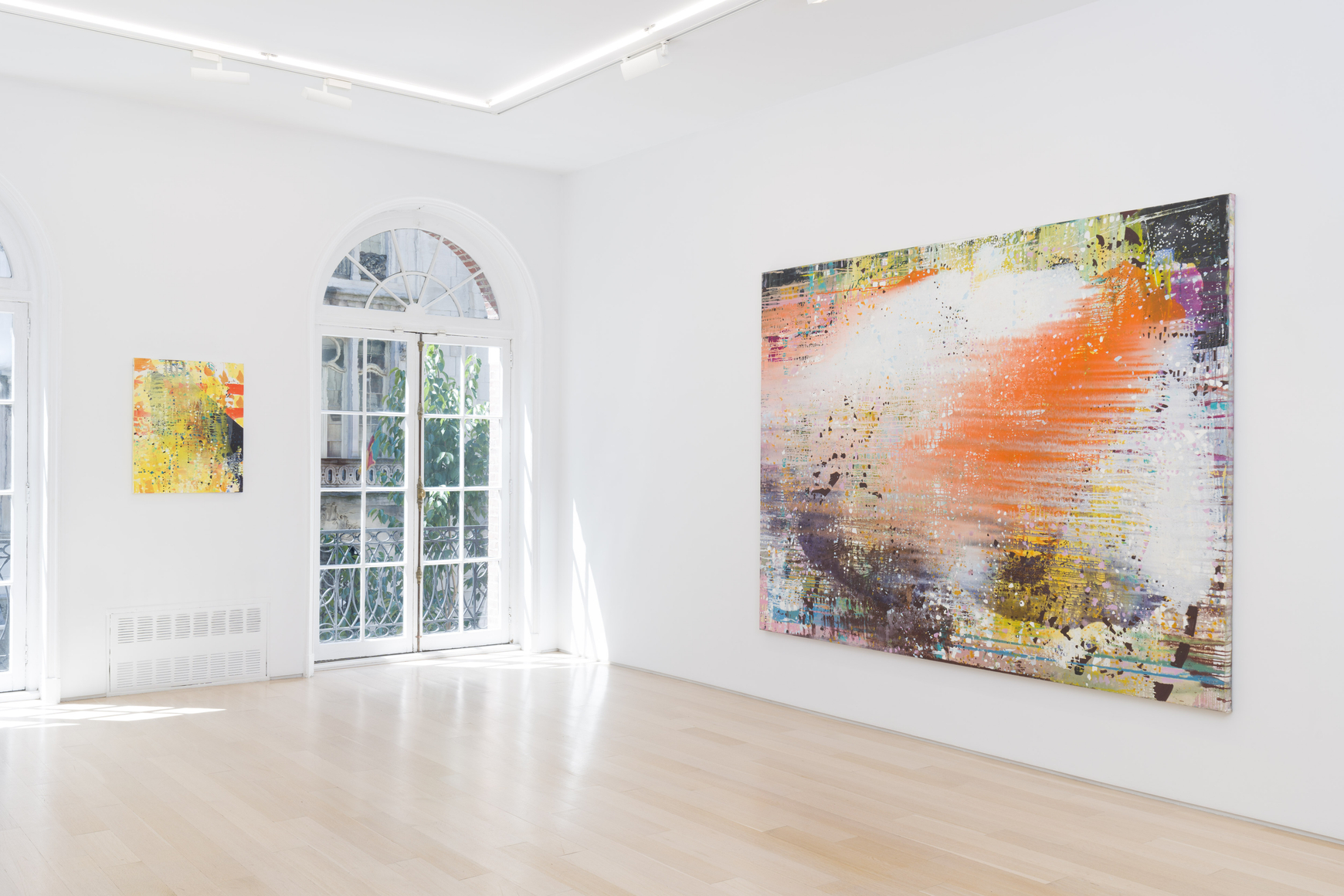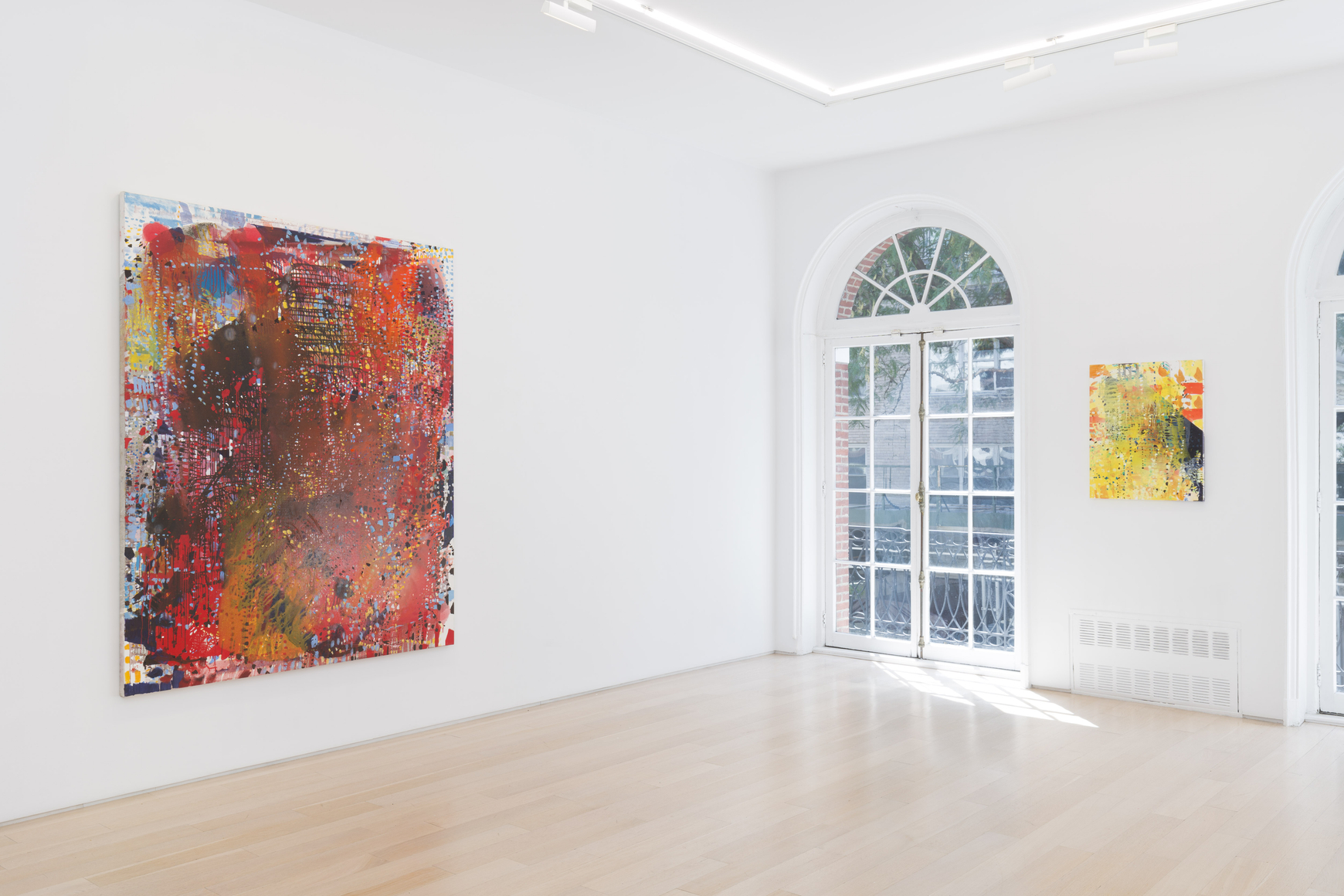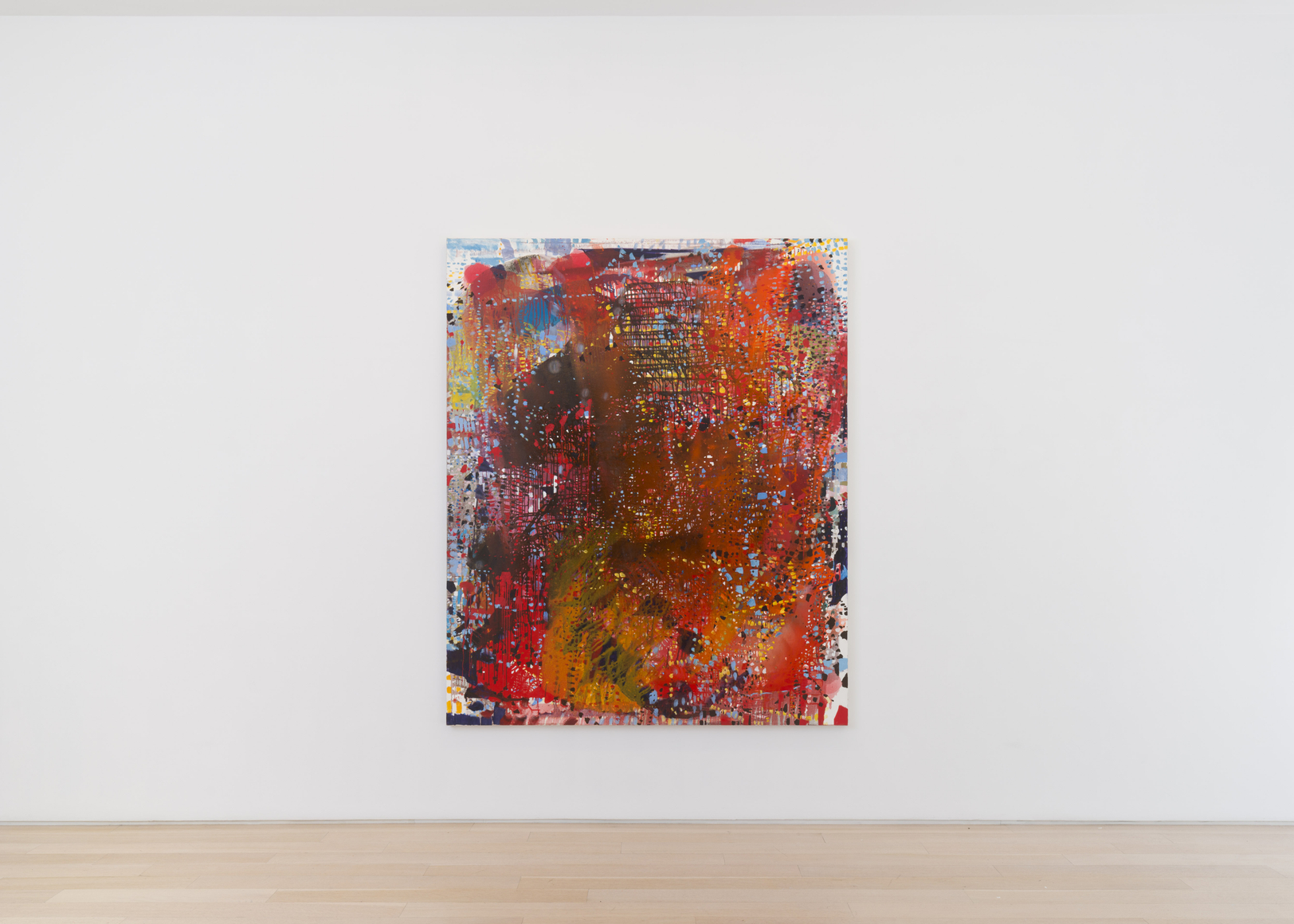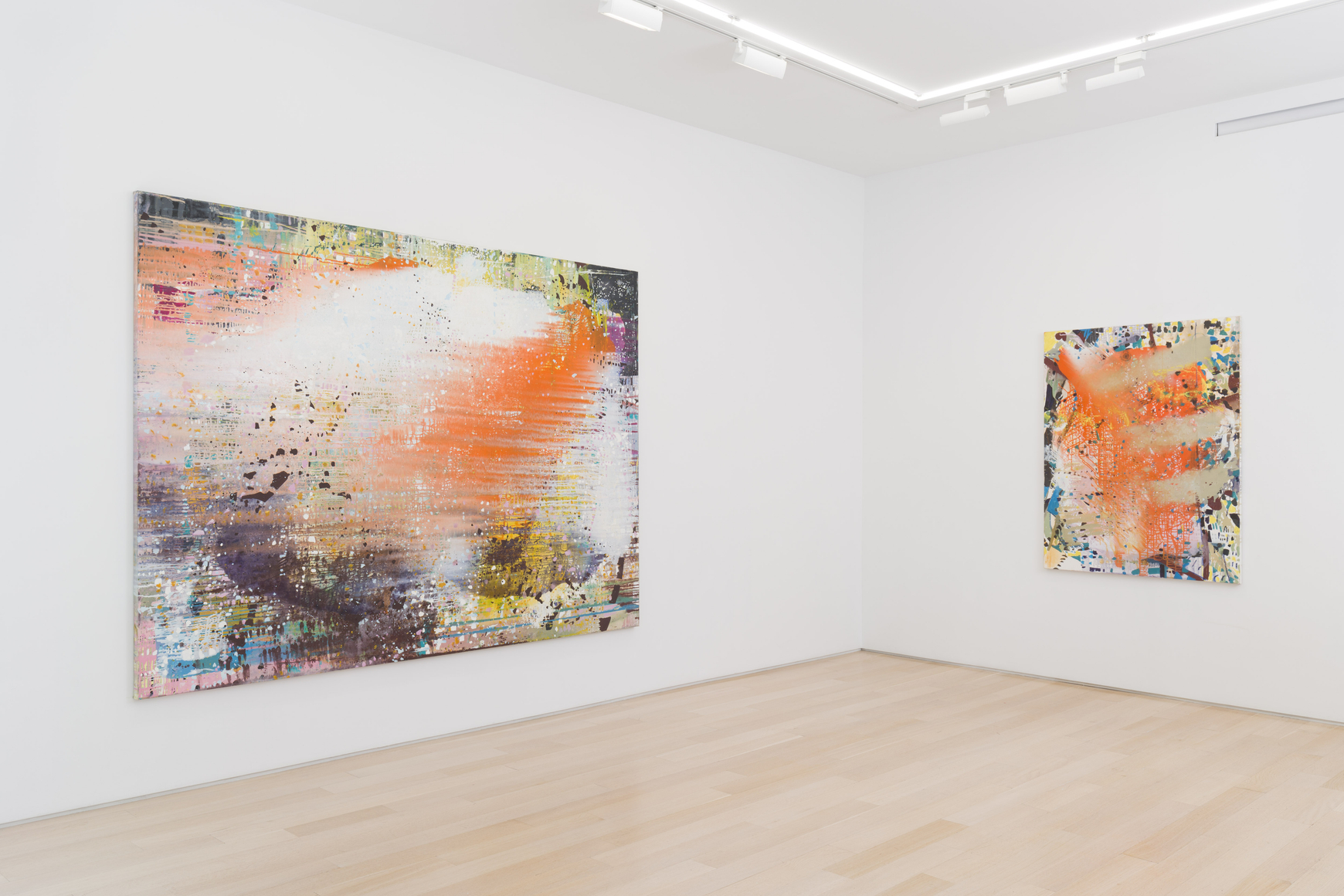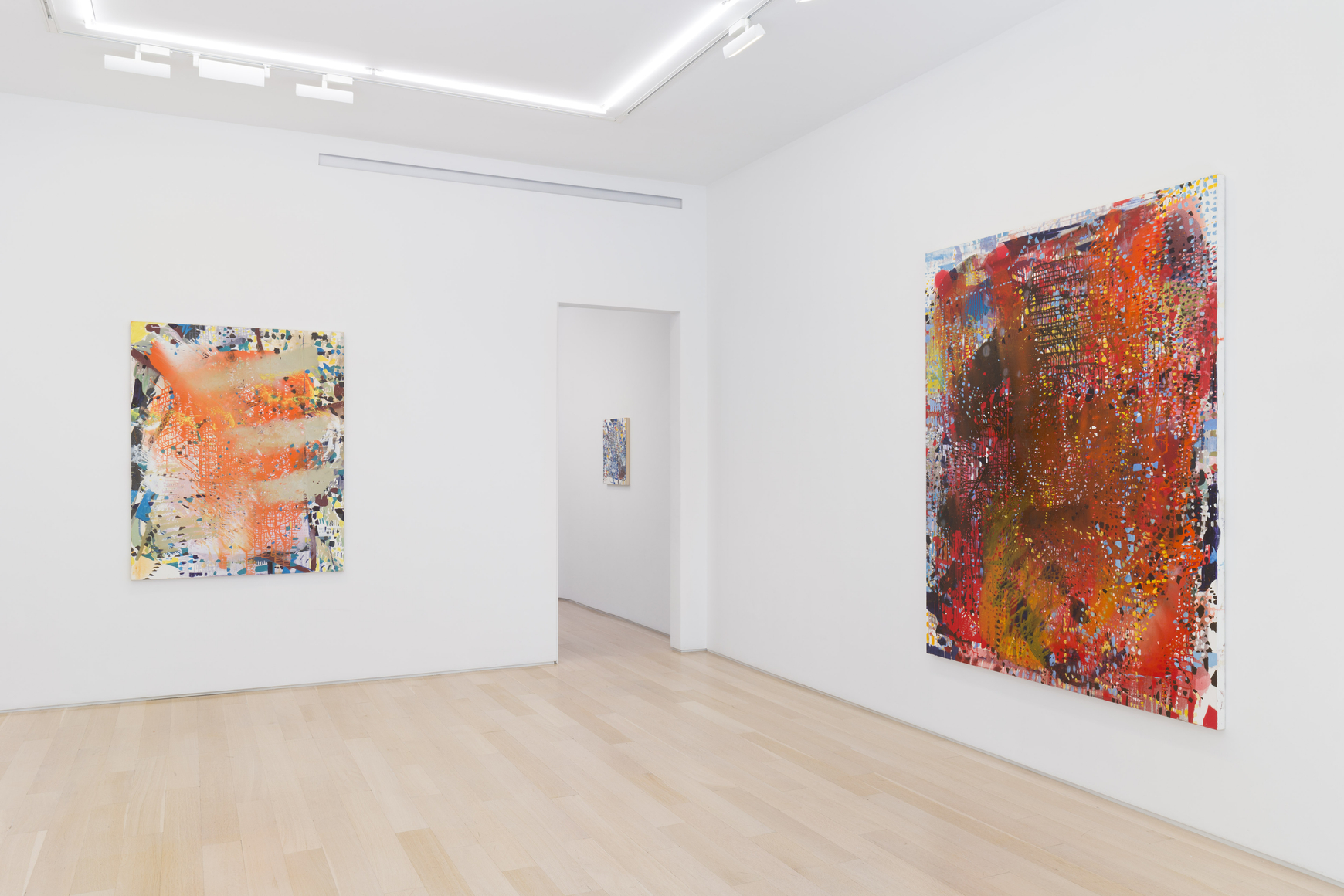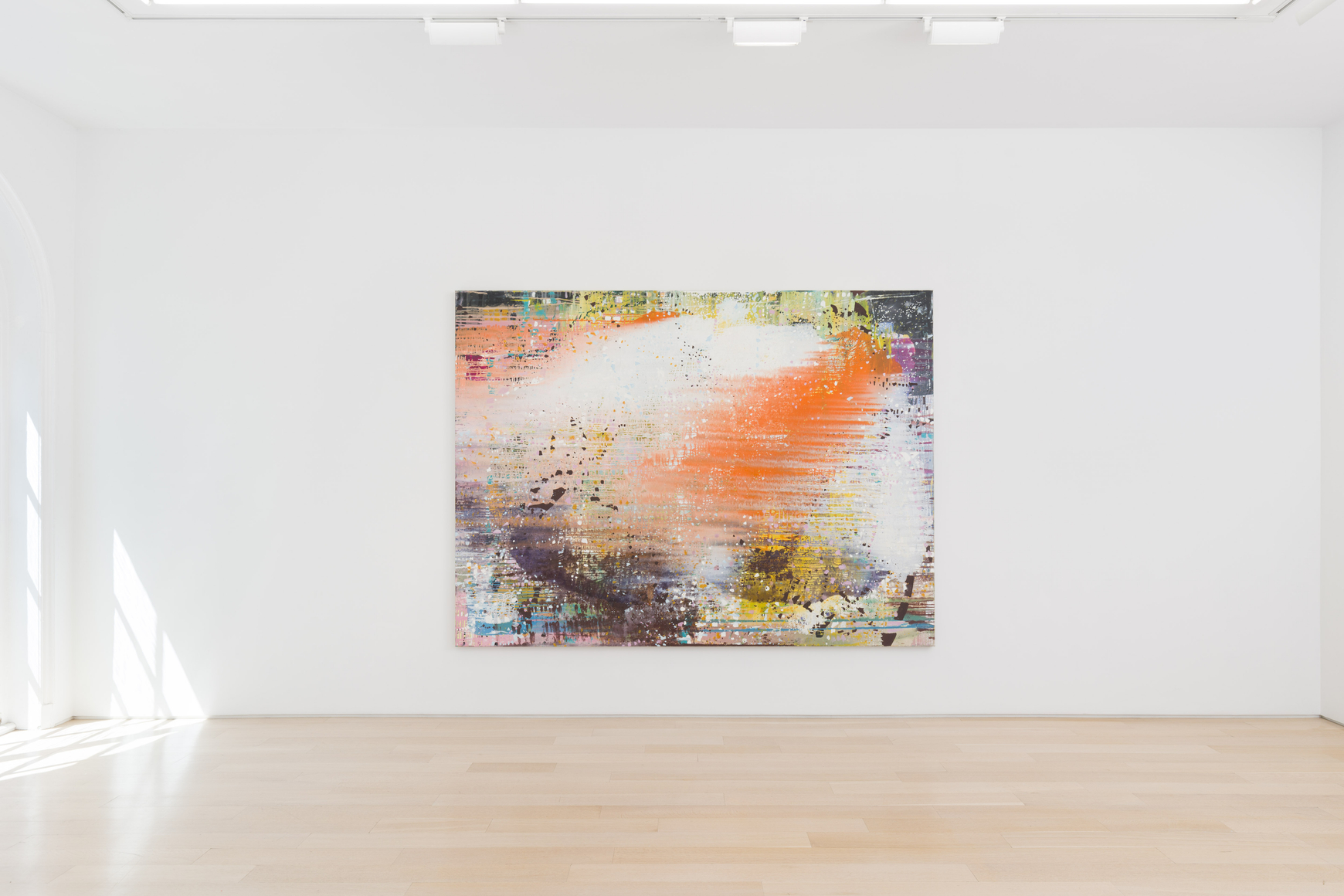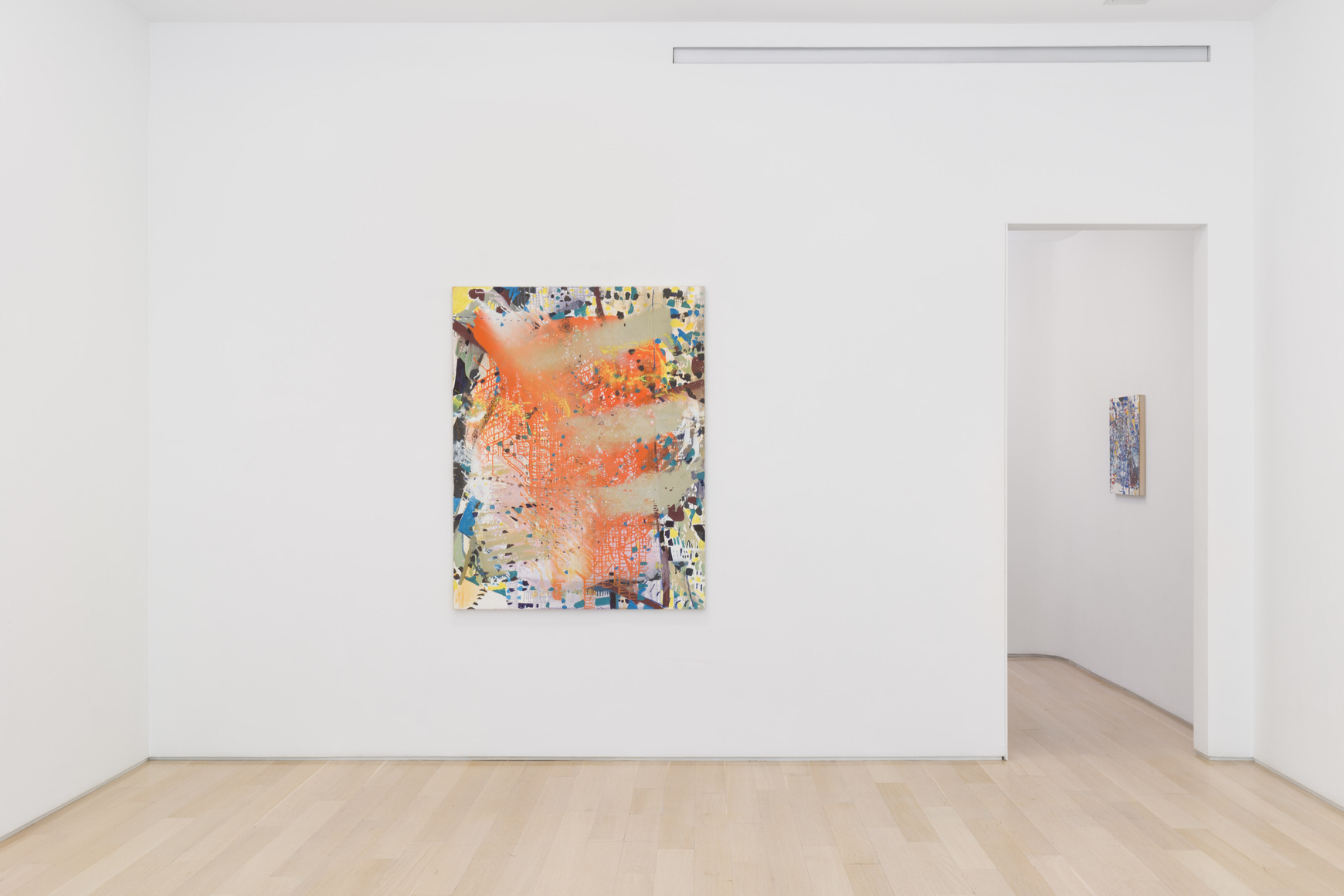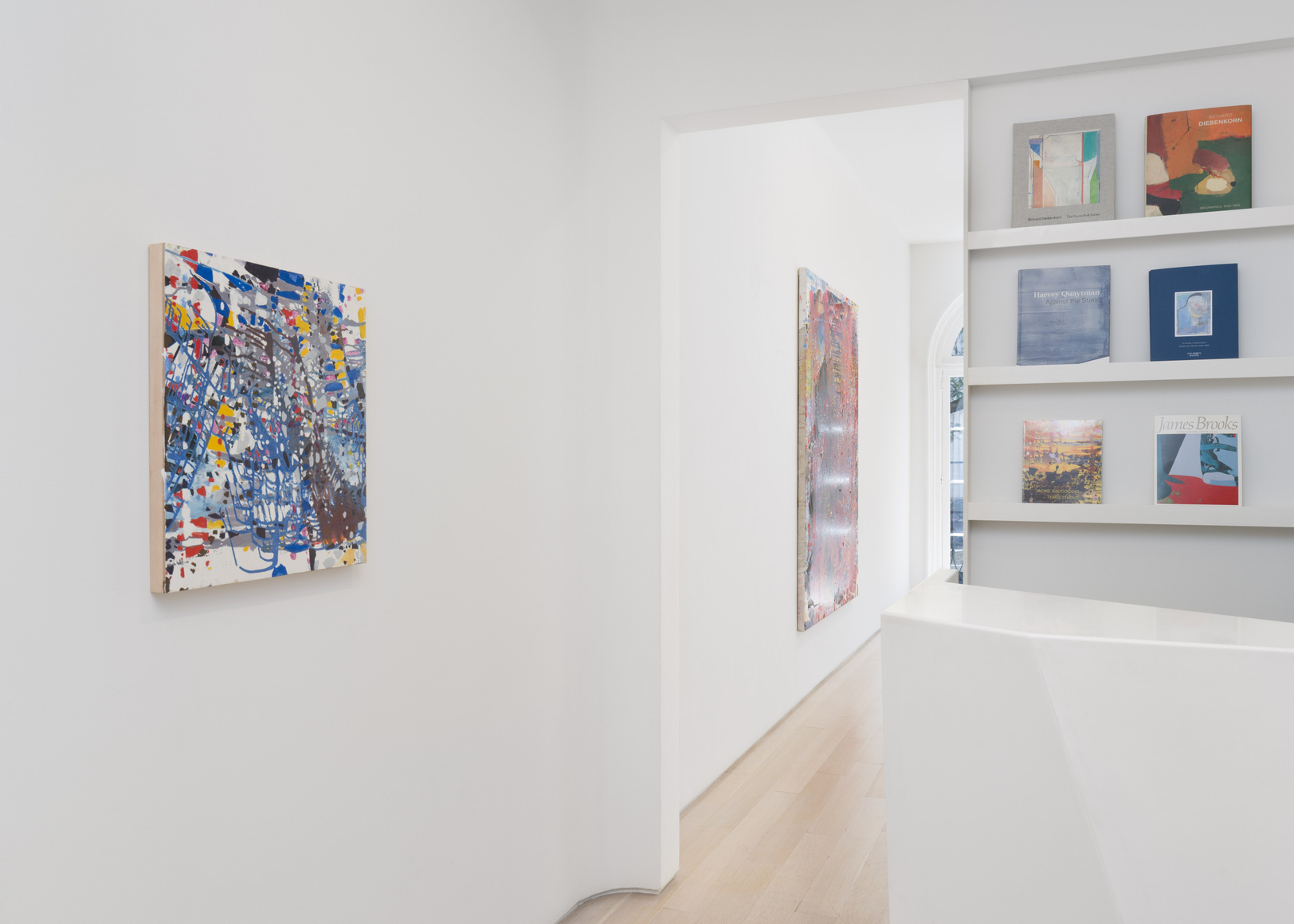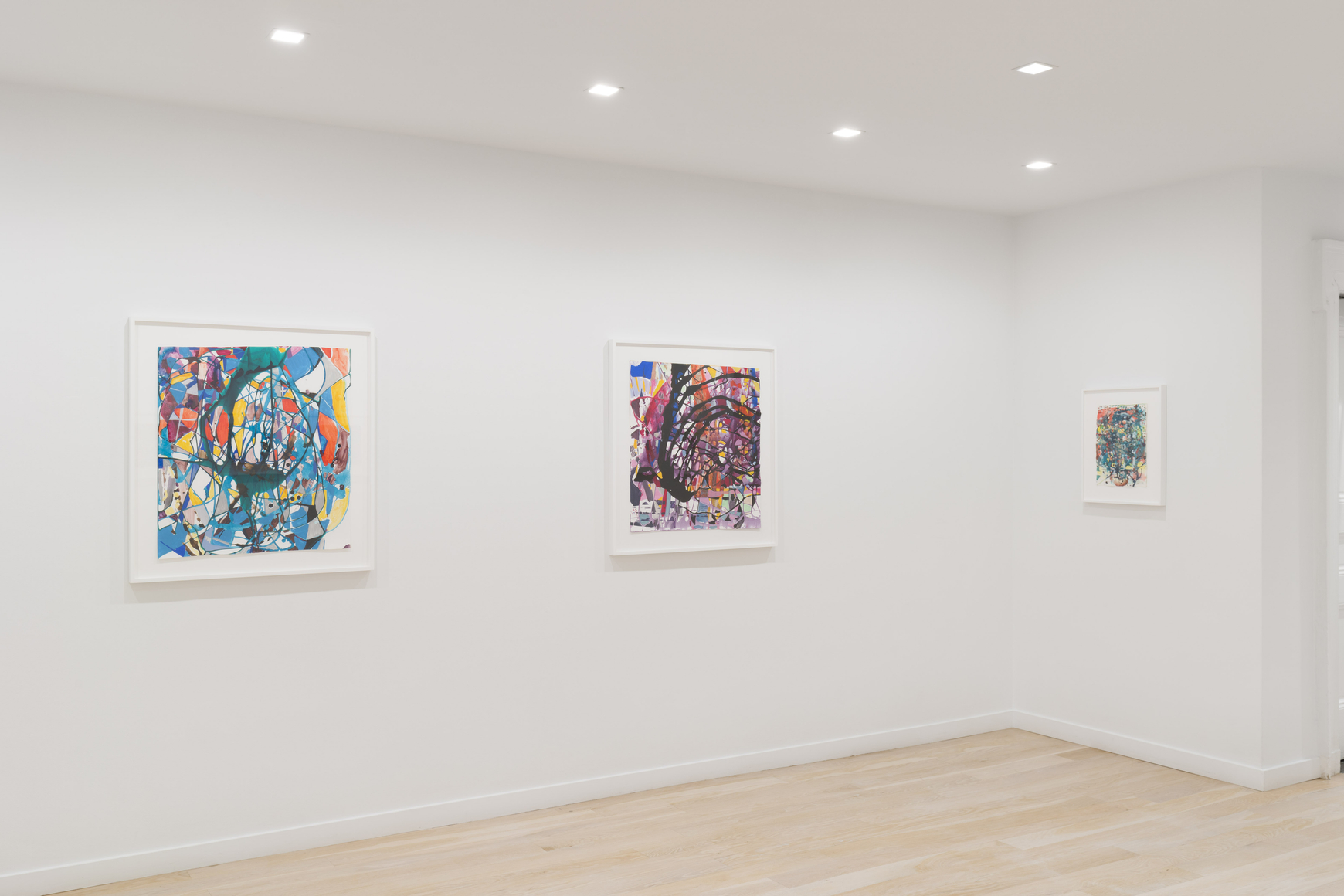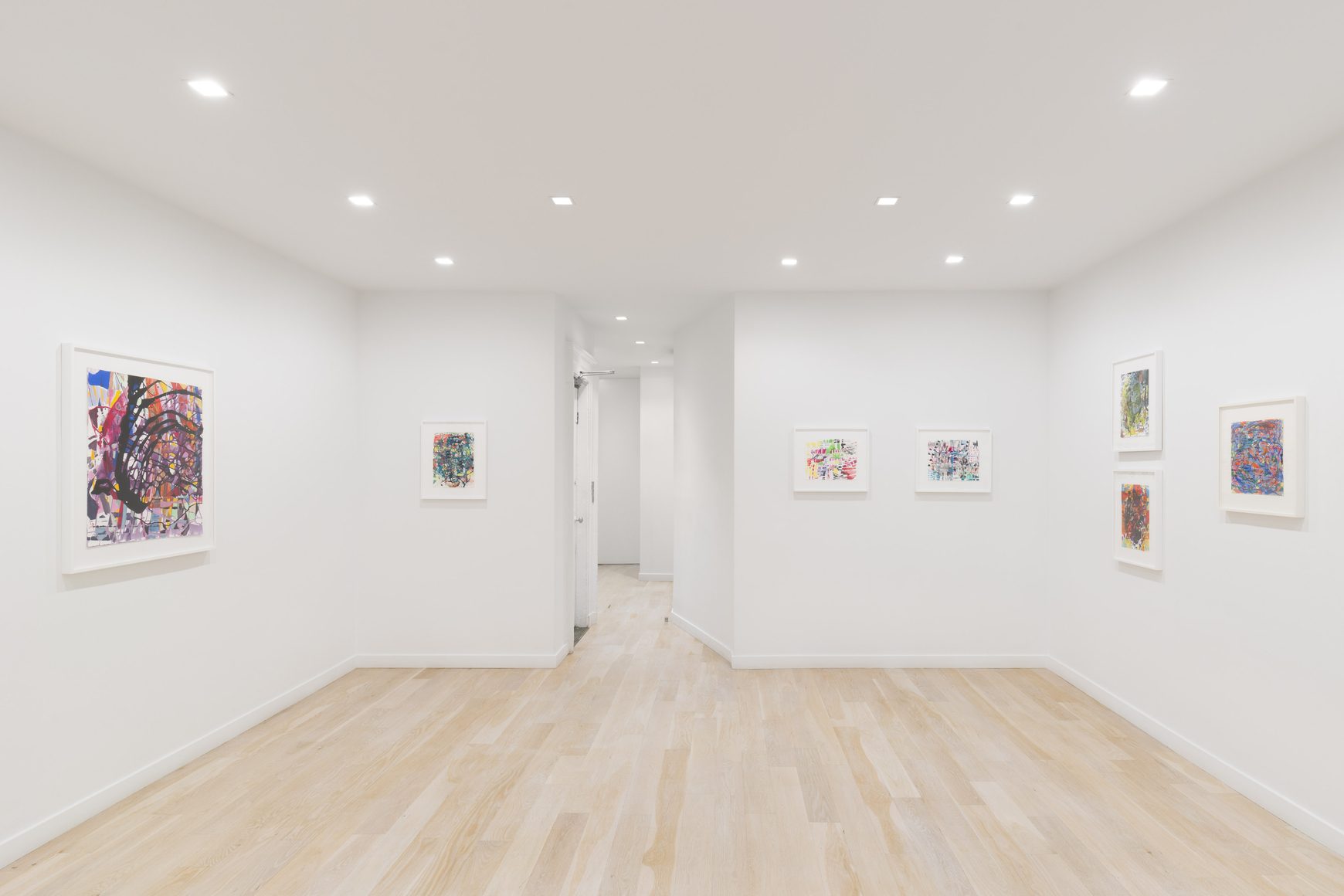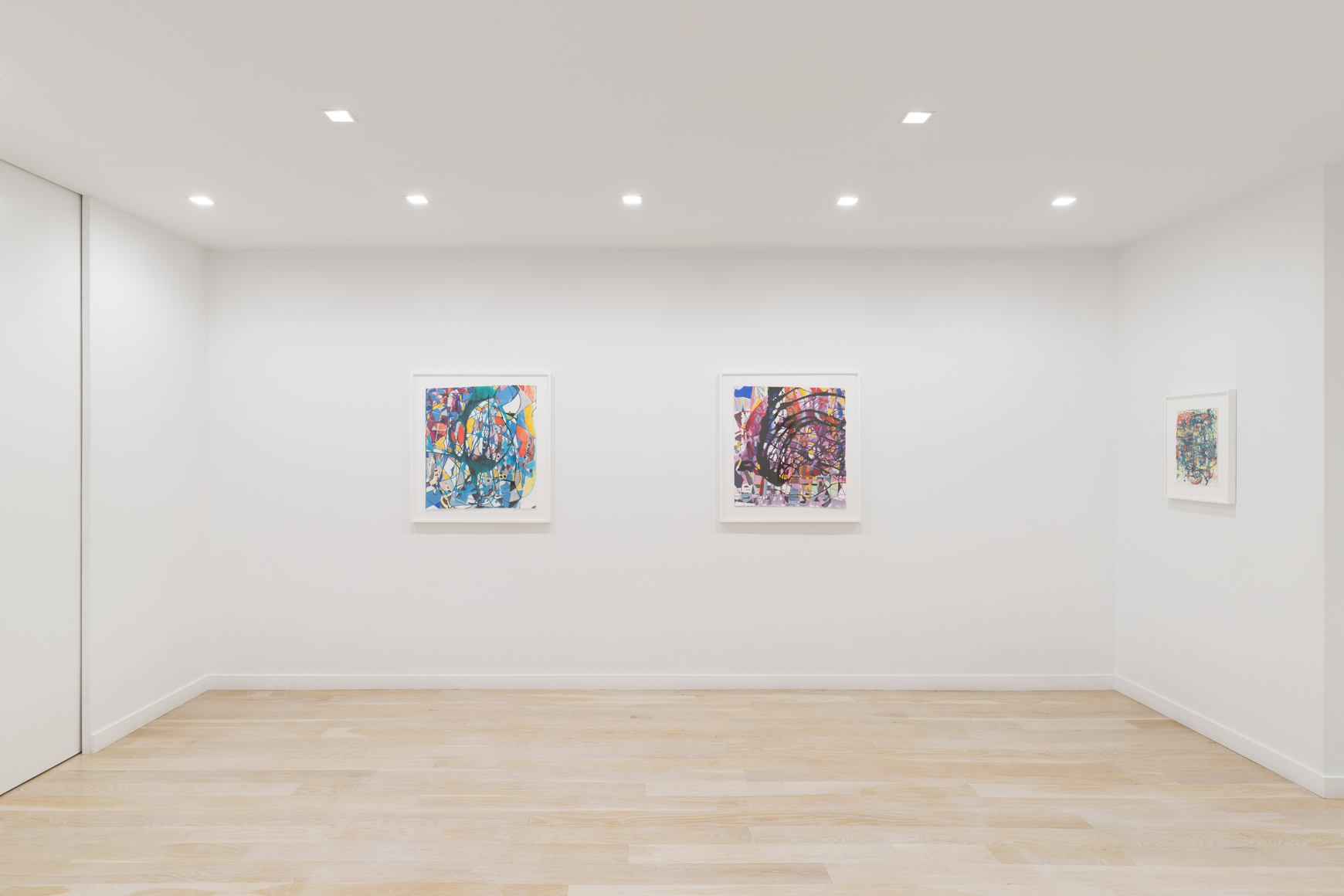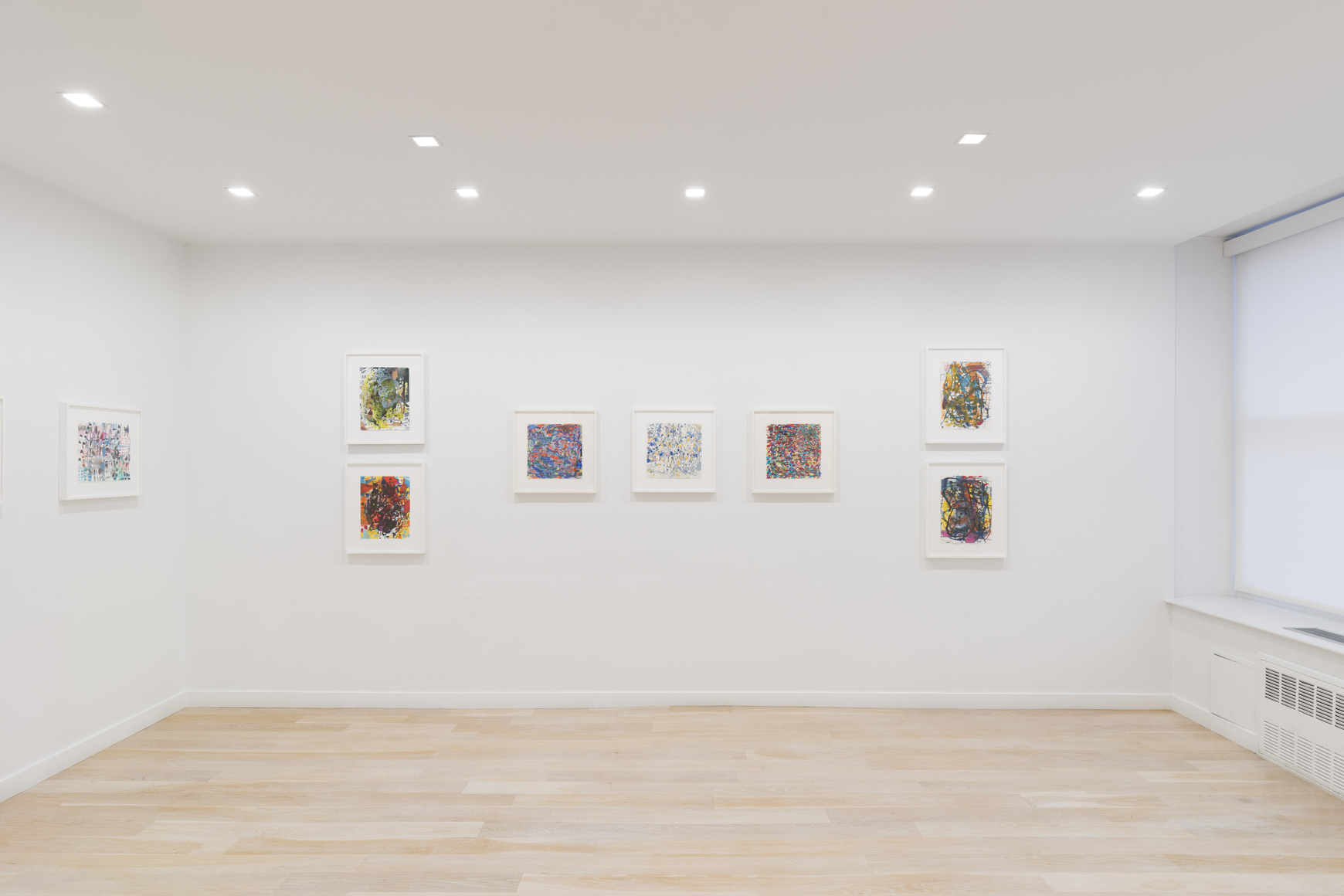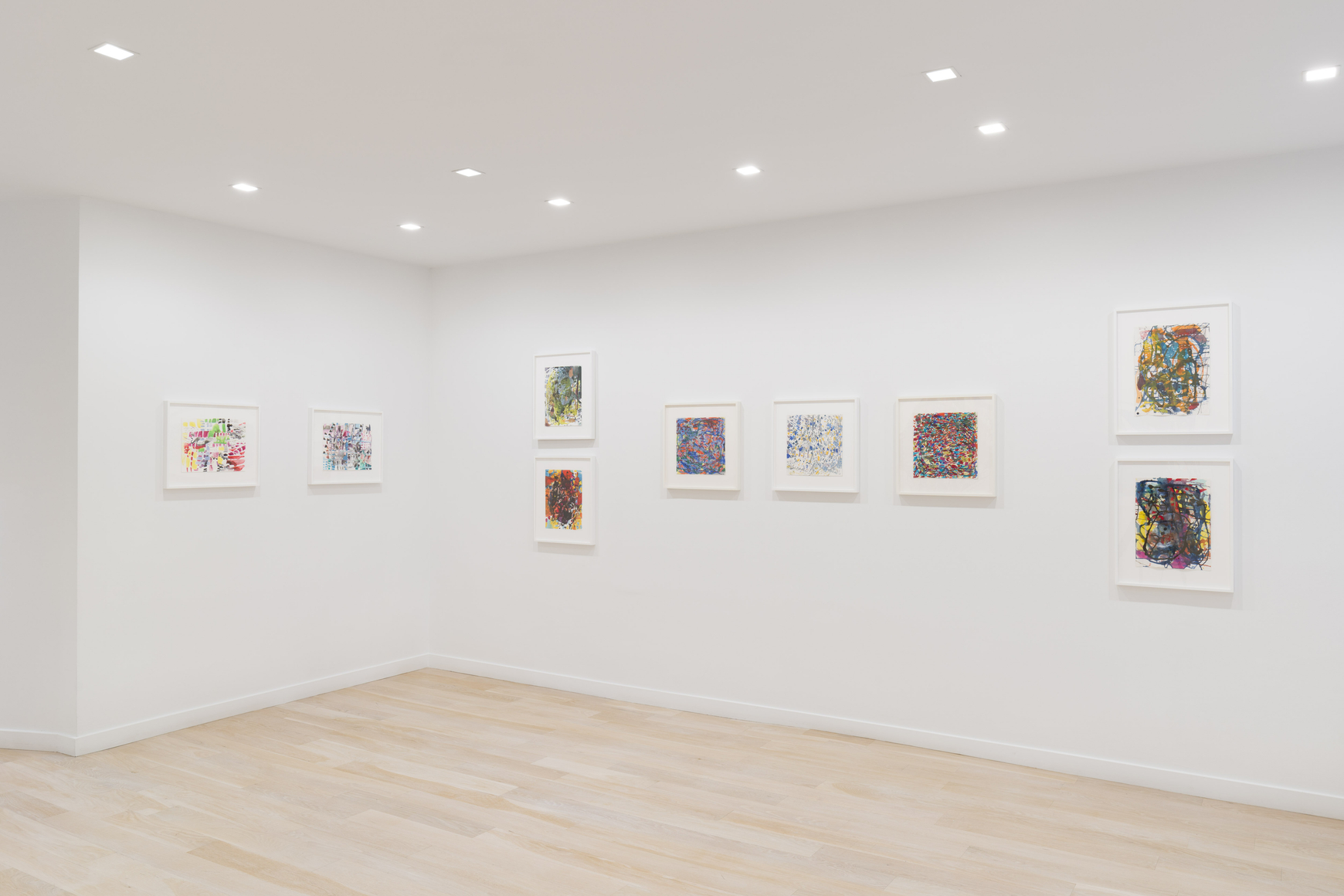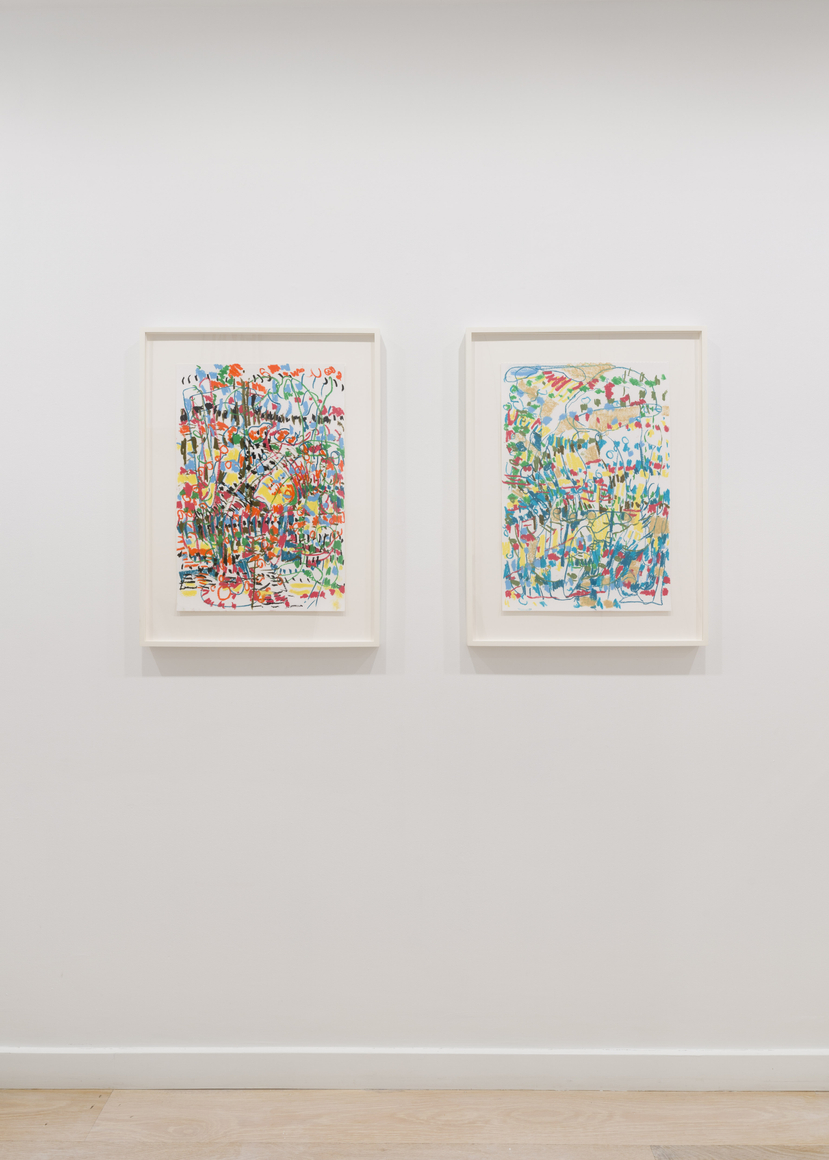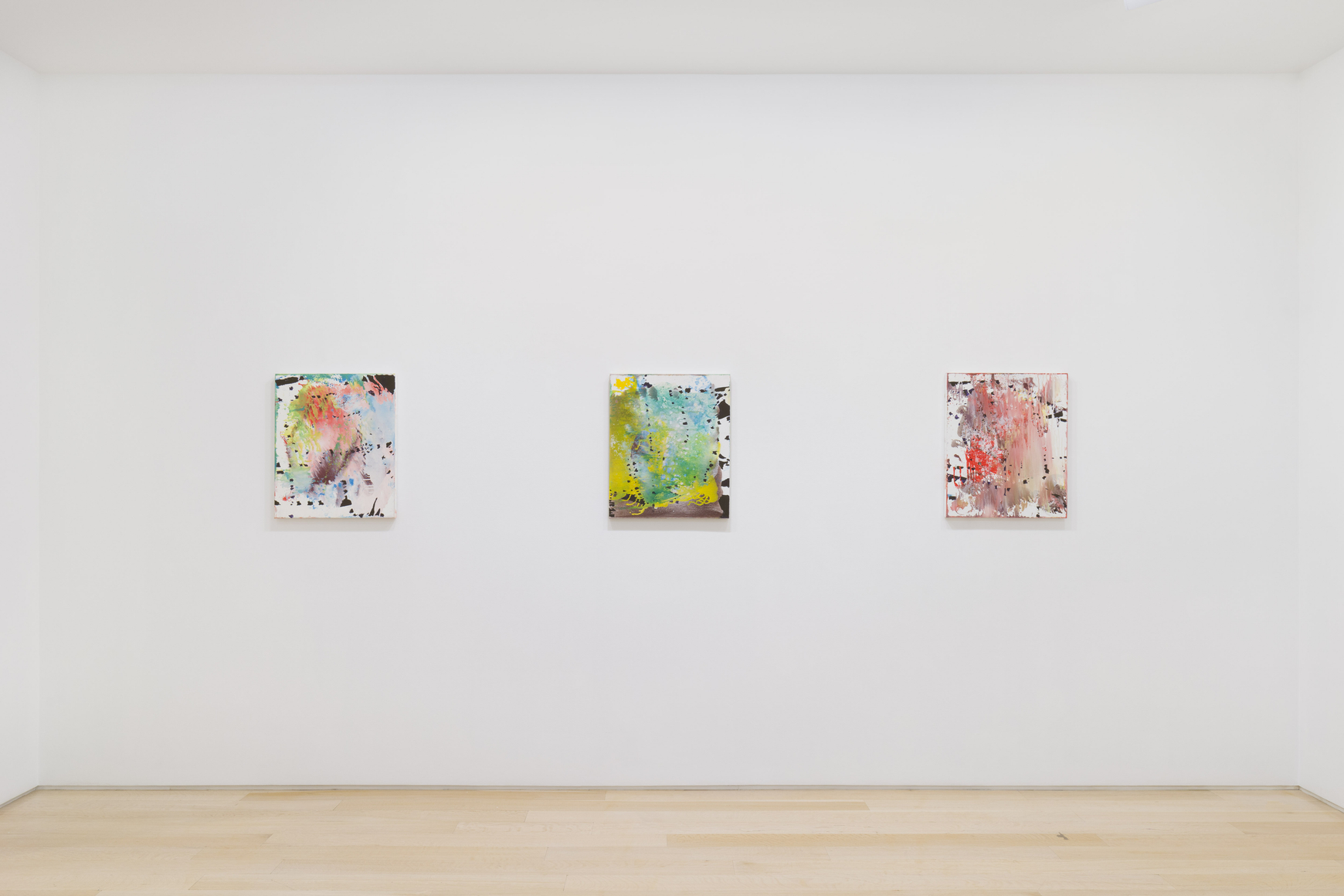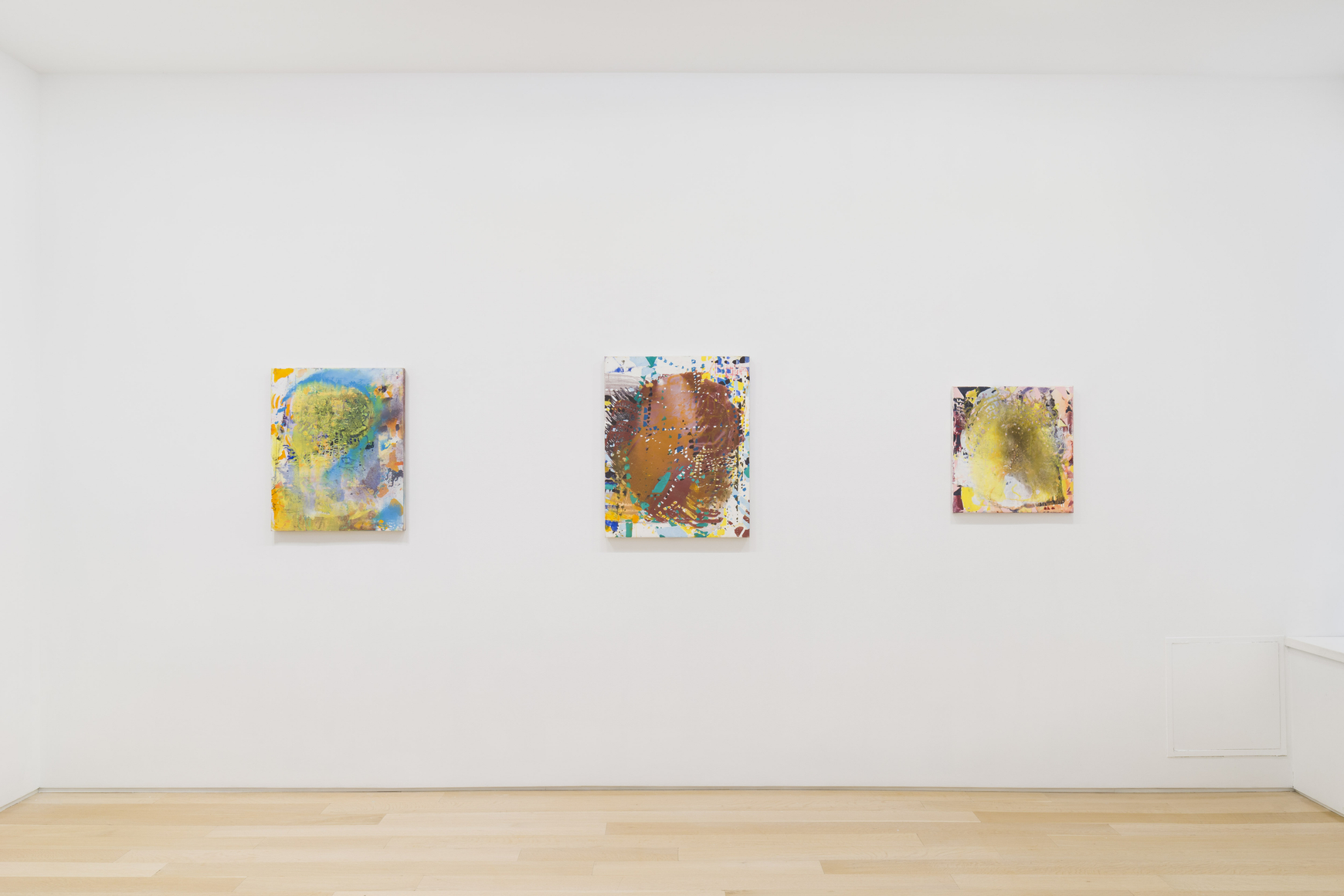Van Doren Waxter announces Jackie Saccoccio: Tempestuous at its 1907 historical townhouse at 23 East 73rd Street from September 8 to October 29. The exhibition of paintings and works on paper made in the last two years of her life is the first exhibition of the artist’s since her passing and will take place across the second and third floors of the gallery. A painter renowned for her large-scale, radiant abstractions and adventurous, body aware use of the canvas as a painting tool, Saccocio (1963-2020) is recognized for a highly physical practice that favored chance, gravity, time, and control, as she tipped, dragged, and shook her paintings over one another. An illustrated exhibition catalogue accompanies the exhibition with a moving and revelatory essay by artist and friend Carroll Dunham (b. 1945).
Art critic Roberta Smith, writing in Saccoccio’s obituary in The New York Times, situated her “explosive yet delicately structured, almost atmospheric abstract paintings that exploited paint’s fluidity” which “needed to be looked at over time to get a full sense of their complex, ravishing beauty” within a “generation of female artists now in their 40s and 50s who added a new vitality to abstract painting beginning around the turn of the 21st century.” Her large paintings “on which expansive waves and splashes of bright, luminous color seemed to swirl and clash amid networks of dripped lines running in several directions…seemed to hover before the viewer like an overactive, sumptuously colored cloud.”
The twelve paintings and fourteen works on paper evidence an unabashed bravado and invoke a comment the artist made about her late work, which made her think of the “explosive nature of a tempest.” Formally, Saccoccio preferred scale and space, confessing to an interviewer she thought she was going to be an architect. “But I realized that it wasn’t buildings that I wanted to make but rather some kind of connection with space–delving into this vertiginous space, trying to make something out of that. It was always an illusionistic space, though, not a real space.”
A significantly scaled abstraction, Portrait (Scarred Faceless), 2020, measuring six by eight feet across anchors the presentation, with Saccoccio at her most confrontational and fluid, and as Dunham says, one of her “most beautiful.” He writes that he struggled to accept her large paintings as “portraits” despite the fact that many are titled “as such.” However, he adds, “after she died, I started to think again about the ‘portraiture’ as being of her, herself” and “one can easily imagine a residual ‘face’…its journey through its ‘life’ (a result, and a casualty, of materials and procedures) has pushed it toward vanishing, but the mind’s eye knows it’s there and the body’s eye wants to see it.”
Untitled (2020) is an optically thrilling, kinetic canvas of richly hued cords and gassy veils of color, recalling Saccocio’s comment that she wanted “to make a static object seem like it’s moving.” While another oil on linen, also Untitled, demonstrates how the experimental painter used her body to create “abstraction at full throttle”—a liquid-like expanse has an incredible force that suggests wind, a flood, or sorcery. The show includes a suite of brightly pigmented compositions on paper, remarkable for their energy. The drawings continued her ongoing experiments with pattern, line, and color, and show her working rigorously, playfully, and “like a tempest,” with a sense of magic and explosiveness.

